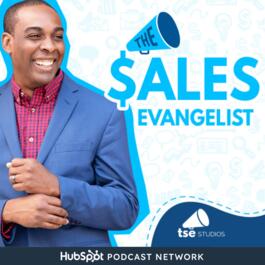
John Livesay | Sales From Street: "Better Selling Through Storytelling”
Instead of pushing your message out to your prospects in hopes that they’ll latch on, sellers can make their message magnetic and practice better selling through storytelling. John Livesay is known as the “pitch whisperer” because he helps people become compelling storytellers. Plato said stories rule the world, and it’s still true, except 2,600 years later, we have many distractions that he didn’t have. Push and pull Pushing your message out to sell a product or service just doesn’t work anymore. The new technique is to pull people in with great stories. John’s work as a storyteller began at an ad agency where he was tasked with creating 30-second commercials for movies. He discovered the need to tell a concise story that made people want to see the movie. During a stint in Silicon Valley, he competed against IBM and other massive companies to sell technical products. He realized that if you confuse people, they say no. But you can pull people in by telling the story of what the technology does. His work culminated in a career selling ads for Conde Nast magazine, where he had to bring to life the vision of a particular brand to a particular advertiser so they could see why their brand would resonate with the stories being told in the magazine. Self-esteem roller coaster John points to the fact that sellers tend to feel good about themselves only when their numbers are up. When they’re down, self-esteem suffers. He recognized his sense that he had to constantly push information out, which was exhausting. Even worse, if you’re pushing and trying without getting anything in return, you end up feeling bad about the whole process. Good storytellers allow people to see themselves in the story, which makes the message magnetic. When you become a better storyteller, people want to take your calls and open your emails. #MagneticMessage Campfires The glow of PowerPoint has replaced the glow of campfires, and we often sit in meetings where someone reads to us from a slide. Don’t do that. Nobody wants to be read to. John suggests using a series of images from which you can tell a story. Stories work because of our right-brain, left-brain way of processing information. If you’re buying a car, when the seller shares how many miles-per-gallon it gets, you cross your arms and prepare to negotiate on price. But if you say, “Donald, let me tell you a story of someone like you who bought this car and how it changed his life,” you’ll pull the buyer into the story. People buy emotionally and then back their decision up with logic. Sellers who deal in Ferraris don’t talk about miles-per-gallon. They sell the emotion of driving a sexy car. People buy emotionally, and storytelling is the best way to tap into people’s emotions. If you tug at people’s heartstrings, they open their purse strings. Sales outreach John recently worked with Honeywell on the sales of technical products that keep the air clean inside operating rooms. The team talked a lot about the technology and the specifications and how it was better than what the competition had to offer. The real story is what happens if the air isn’t clean in the operating room. The patient gets an infection and has to be readmitted for additional surgeries. Just about every seller has a case study or testimonial of some sort that can form the basis of a good story. Paint a picture Some sellers use before-and-after pictures to sell their product or service, accompanied by a bunch of facts. There’s no emotion or story. A good story has exposition and it paints a picture of...
From "The Sales Evangelist"




Comments
Add comment Feedback